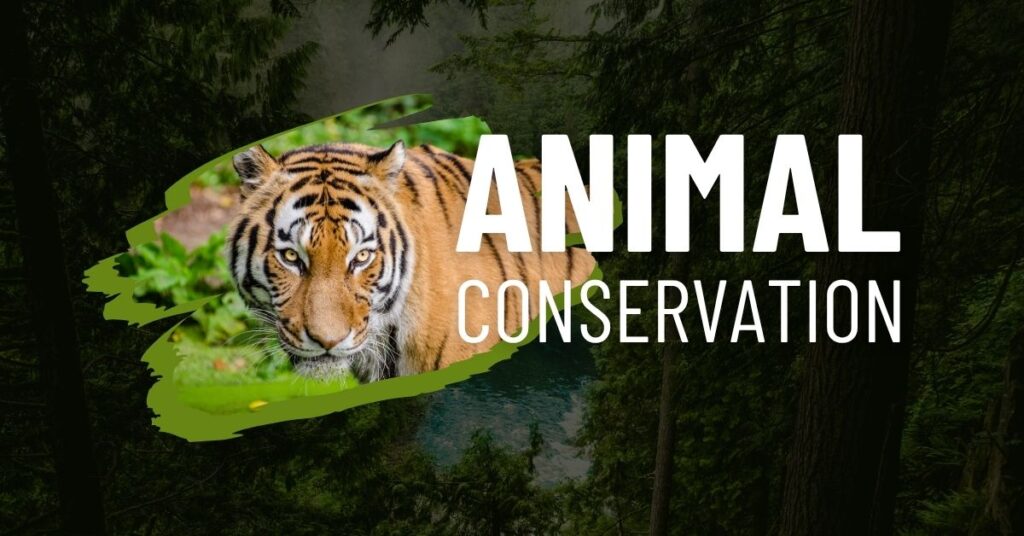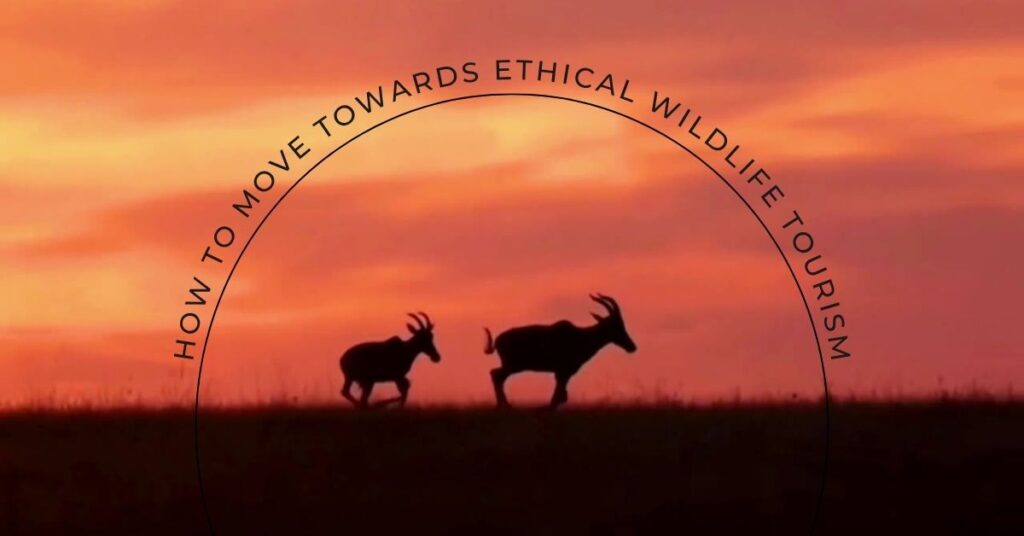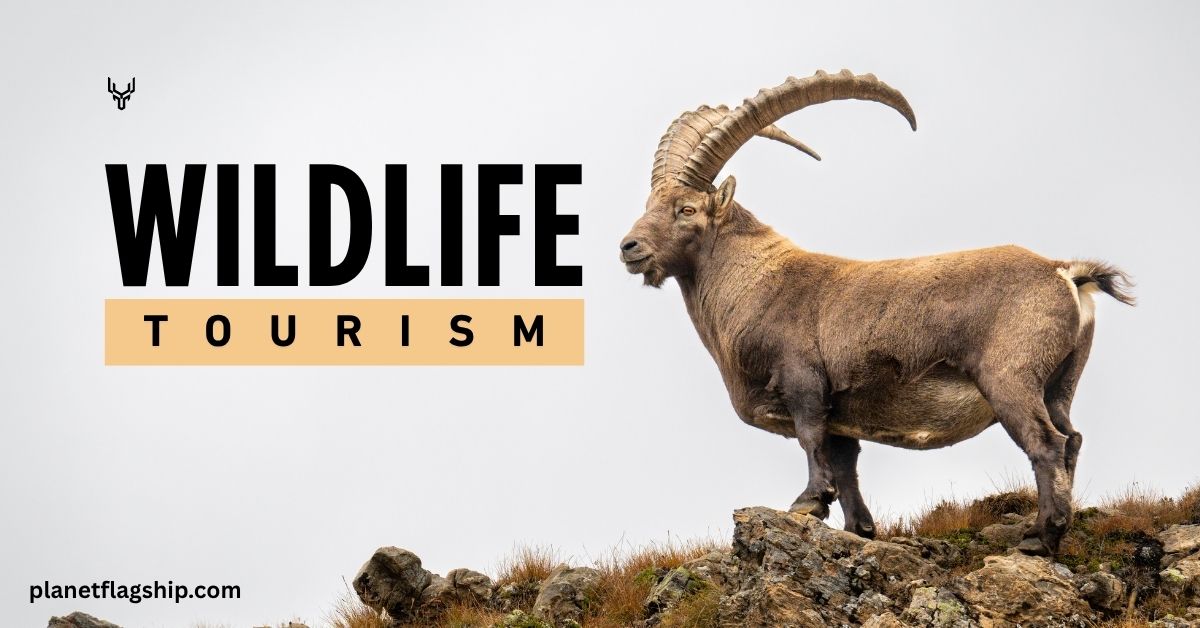Introduction
Wildlife tourism is a growing sector of tourism that enables people to observe, interact with, and appreciate wild animals and plants in their natural habitats or in captive settings. The global economy is expanding, resulting in increased demand for wildlife tourism in both developed and developing countries (Kaurav, 2021).
As people’s interest in watching species in their natural habitats increases, the need for wildlife tourism is growing. Wildlife tourism has become a source of entertainment and income for millions of people. Tourism links people, the global economy, and the environment together. Wildlife tourism can be beneficial for the conservation of species, or it can be detrimental, leading to the exploitation of species. It depends solely on how wildlife tourism is practiced (Tapper).
This article explores the relationship between wildlife tourism and conservation practices. Initially, an overview of wildlife tourism and conservation efforts is provided, illustrating how employment, funding, and awareness practices can support the conservation system. Moreover, this article also explores the black side of wildlife tourism, in which animal abuse, exploitation, and habitat destruction happen in the name of tourism. Real-world case studies will be discussed.
Lastly, practical solutions, such as policy reforms and education, will be discussed to promote sustainable wildlife tourism.
Grasping The Concept Of Wildlife Tourism
We live in an interconnected ecological system where every organism affects every other. The presence of micro- and macro-organisms is both important. Most of the wildlife tourism occurs in naturally protected areas. Wildlife tourism is an interaction between humans and wild species that occurs in their natural habitats. A variety of species, including both wild animals and plants, are present there. People visit such places to interact with the species, learn about them, and form a connection with them.
Wildlife plays a crucial role in regulating the natural system, so conserving it is extremely important. However, wildlife tourism also contributes to their economic growth. There are many types of wildlife tourism destinations, such as safaris, zoos, and ecotourism, where species are conserved and serve as tourist attractions. These places have great economic importance globally and locally. (Towards measuring the economic value of wildlife watching tourism in africa , 2015).
READ MORE: Dead Zones in the Ocean: How Climate Change Is Fueling a Growing Crisis
In What Way Does Wildlife Tourism Support Conservation

If Wildlife tourism is managed properly, then it will play an essential role in the conservation of natural habitats and biodiversity. The following are some ways in which wildlife tourism can support conservation efforts.
Funding by protected areas
Wildlife tourism can be a valuable source of revenue for protected areas, including national parks and wildlife reserves. The fees for entering these areas and permits for tours can be a helpful source of revenue. That money can become a source of funding for conservation efforts, such as habitat restoration. For example, in Rwanda, gorilla trekking permits cost $1,500, which plays a crucial role in the conservation of mountain gorillas. (Annual report of Rwanda development , 2022)
Wildlife tourism as an economic benefit for locals
Wildlife tourism also acts as a source of income for the local community. They work as tour guides, cooks, rangers, and handicraft sellers. By engaging in such work, they avoid harmful activities such as cutting down trees and poaching. Hence, biodiversity can be conserved.
For example, in Namibia, a program is held to facilitate local communities, in which locals manage wildlife areas and earn a living. In 2020, approximately 20% of Namibia’s area was covered by these conservancies. As a result, the populations of rhinos and elephants have increased. (WWF Namibia, 2020)
Awareness of conservation
Wildlife tourism plays a vital role in educating people about the importance of nature and its protection. Wildlife tourism has a lasting emotional and intellectual impact on visitors. Due to the awareness visitors gather from places, they help them remember the importance of conservation efforts.
What way does wildlife tourism cause exploitation
Wildlife tourism has the potential to conserve species, but it can sometimes lead to the exploitation of wildlife. The following are the ways in which exploitation occurs in wildlife tourism.
Disruption of habitats
In tourist areas, many animals are struggling to survive due to overcrowding by tourists. That can lead to habitat degradation and stress on local wildlife. For example, on the Galapagos Islands, animals migrate to their natural environment due to over-tourism. Tourism has also led to environmental degradation, including pollution, littering, and the development of infrastructure in sensitive ecosystems.
Pseudo-conservation
Sometimes, people develop wildlife tourism points just for the sake of conservation. That is called greenwashing, in which they claim to be protecting endangered species, but they are not aligned with true conservation practices. They do something and present something else. Due to such projects, most wild species are surviving.
For example, in the report by the Born Free Foundation (2019), there are areas where animals are being bred, but the organizers have no intention of releasing them back into the wild. Animals are kept there to attract tourists, and then the chain of exploitation continues in the name of conservation.
Case studies
Community-based conservation in Namibia
Namibia is recognized as a leader in community-based conservation. In 1990, due to the establishment of legal frameworks, local people were granted the right to form communal conservancies and manage wildlife on their land. Over time, the number of species has increased, including the populations of lions, black rhinos, and elephants. The poaching activities are also reduced due to local ownership of wildlife protection.
Due to all of this, the community respects the wildlife scenario and changes the narrative to “protect for prosperity” from “kill to survive.” That case study shows that when people respect wildlife conservation, it becomes a shared goal. This case study highlighted the positive side of wildlife conservation.
Iran case study on ecotourism and biodiversity conservation in Golestan National Park
In northeastern Iran, the Golestan National Park is situated, boasting a rich biodiversity and several endangered species. The community in the area has a high number of impoverished individuals, and they experience some human-wildlife conflicts, such as livestock losses. This case study highlighted the role of ecotourism in conserving biodiversity. Here, a survey was conducted in which 80% of participants reported experiencing some economic benefits, while 35% reported economic loss. And 58% benefit from tourism activities.
That reveals an imbalance, as those who have economic benefits have the least benefit in tourism. This suggests a need for a more equitable distribution of tourism benefits, particularly in areas that heavily rely on wildlife. There is a need for local conservation efforts to ensure the sustainability of protected areas. (Tourism and nature conservation: A case study in Golestan National Park, Iran, 2018)
Case study of elephant entertainment tourism in Thailand
In Thailand, elephant tourism shows the darkest side of wildlife tourism, in which elephants are subjected to cruel training practices at a young age, and that is known as phajaan. It is a process in which physiological and physical abuse is performed to break the spirit of animals, and elephants are forced to do unnatural behaviors such as participation in shows, painting, caring for tourists, just for commercial purposes.
In this case, elephants are used as commodities. That also shows that if regulation and ethical concerns are ignored, then exploitation and suffering can be made into fun and adventure. (world animal protection, 2024)
How to move towards ethical wildlife tourism

It is crucial to adopt ethical wildlife tourism practices, as this is the only way to effectively conserve species and minimize exploitation. Tourists also must avoid activities that harm animals, such as rides or shows.
It is the responsibility of governments and NGOs to develop strict regulations and policies that protect the rights of animals. However, tourists must educate themselves to support environmentally friendly organizations and local communities. Only this measure can divert wildlife tourism from exploitation towards genuine conservation.
FAQ’s
What is wildlife tourism?
Wildlife tourism involves traveling to observe and experience animals and plants in their natural habitats or in controlled environments such as zoos and reserves. It can promote conservation or cause exploitation, depending on how it is managed.
How does wildlife tourism support conservation?
When managed ethically, wildlife tourism generates revenue for protected areas, creates jobs for local communities, and raises awareness about biodiversity. This funding helps restore habitats and protect endangered species.
What are the negative impacts of wildlife tourism?
Poorly regulated wildlife tourism can lead to habitat destruction, animal exploitation, and stress on species due to overcrowding. Practices like elephant shows or greenwashing projects are examples of exploitation.
What are examples of ethical wildlife tourism?
Ethical wildlife tourism includes safaris that respect natural habitats, community-based conservation in Namibia, and eco-tours that educate visitors about protecting biodiversity without harming wildlife.
How can travelers practice responsible wildlife tourism?
Travelers can support ethical tourism by avoiding animal shows or rides, choosing eco-certified operators, and supporting conservation projects that benefit local communities and wildlife equally.
Conclusion
Wildlife tourism has both positive and negative impacts, which depend on how it is managed. If responsible measures are taken, then wildlife conservation can be achieved. This will lead to exploitation if strict measures are not taken in this regard. The conservation measure also depends on the actions taken by travelers and citizens. There is a need to act, to support genuine conservation, boycott exploitative activities, and promote ethical tourism practices.
References
- (2020). Retrieved from WWF Namibia.
- (2022). Annual report of Rwanda development https://rdb.rw/reports/RDB-Annual-Report-2022.pdf.
- Kaurav, R. P. (2021). WILDLIFE TOURISM: A SYNTHESIS OF PAST, PRESENT, AND FUTURE RESEARCH AGENDA. research gate.
- Tapper, R. (n.d.). Wildlife Watching and tourism. Muriel M. Mannert.
- Tourism and nature conservation: A case study in Golestan National Park, Iran (2018).
- (2015). Towards measuring the economic value of wildlife watching tourism in africa . World Tourism Organization (UNWTO).
- world animal protection. (2024, march 20). Retrieved from world animal protection: https://www.worldanimalprotection.org/
- https://www.worldanimalprotection.org/latest/blogs/thailand-elephants/#:~:text=Blog,to%20improve%20their%20well%2Dbeing.
- https://www.wwfnamibia.org/

John is a professional blogger and passionate advocate for environmental sustainability. With years of experience exploring eco-friendly practices and green innovations, he shares insightful articles on Planet Flagship to inspire a sustainable future. John’s expertise lies in making complex environmental topics accessible and actionable, empowering readers to make meaningful changes for the planet.
